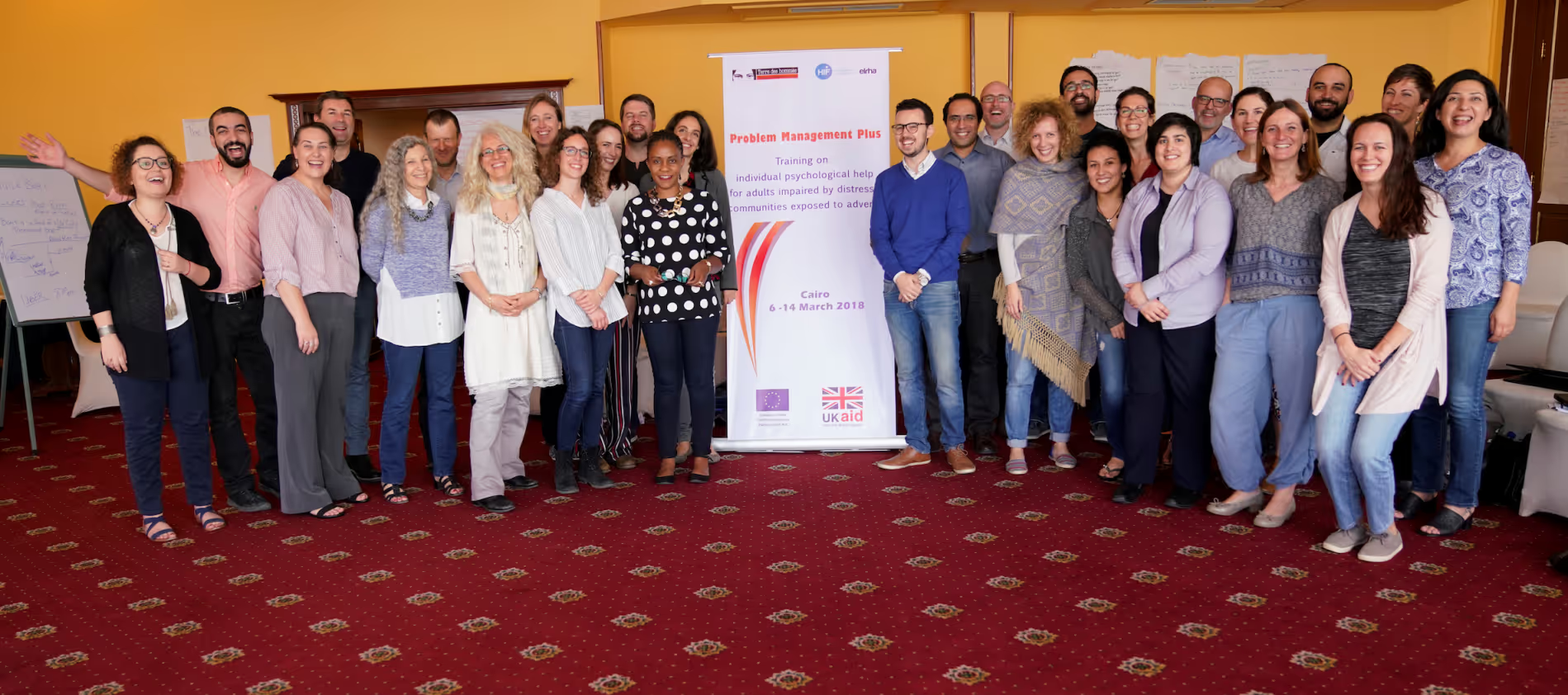PM+‚ Supporting people through Adversity

As I entered the first day of training for PM+, the first thing I noticed was that the room was packed with people from all around the world, who all came to attend this special training in Cairo. The walls were covered with charts hung up by the trainers, asking us about our expectations and our knowledge in supporting people to deal with adversity.
This was the main topic of this training, based on a new tool: Problem Management Plus (PM+), created by the World Health Organization (WHO) as scalable sustainable solution to respond to growing needs to provide psychological support to persons in distress situations, while facing a paucity of specialized mental health staff.
So what is PM+? And why is it important?
A -seemingly- simple tool. PM+ is a tool made to be used in times of adversity; to help when the need for mental health support outstrips the services provided. It mainly tackles clients suffering from anxiety and depression but could also help those with other difficulties. Imagine a tool that is versatile enough that it does not need mental health professionals to administer; a tool that is efficient enough to help those that need help the most; a tool that does not depend on a diagnosis. And finally, a tool that teaches an individual to self-manage their stress for and create sustainable solutions. PM+ delivers all of that and a little more.
During the discussions, we started simulating a step by step model on how to apply PM+ to actual scenes of adversity. I was impressed by how versatile and easy to use the tool is. It does not need previous training in mental health as the person providing the service only has to follow the PM+ manual. And while receiving supervision, they would become capable of delivering the full effect of PM+.
As the intent of the training was to create a pool of trained professionals to spread the methodology, we were introduced to several of the program’s strengths and how they are used. For instance, how in a relatively short period of time, a large group of individuals could be trained to be able to deliver PM+ in times of need. This first stage brought together 9 different organizations and 18 trainers and clinical supervisors who participated in the training.
After the training ended, we all returned home to develop the implementation plans and see how to disseminate PM+ through our own organizations (and beyond).

Attendees from left to right: Ahlem Cheffi, Hatem Alaa, Alison Schafer, Alexandre Letzelter, Nancy Baron, Mark Humphrey, Sendrine Constant, Edith Van ‘T Hof, Mellisa, Jennifer Hall, Andy Solomon-Osborne, Tarisai Bere, Sara Algom, Mohamed Salah, Sameh Yousry, Kenneth Carswell, Georgia Karoutzou, Bilal Budair, Pamela Castro, Carmen Valle Trabadelo, Aiysha Malik, Evangelos Tsilis, Ashley Nemiro, Maria Bray, Michail Lavdas, Ashley Leichner, Liyam Eloul, Lina Issa.From my part, in Egypt, the first thing I did was taking on clients and only using PM+ to help them deal with their difficulties. PM+ consists of 5 sessions, of 90minutes each, with the same client. By the second session I was already relatively comfortable with using PM+. A noticeable decrease in the client’s anxiety was noted based on the evaluation done in each session. This was also confirmed by the client’s subjective comments. My next step will be to keep using PM+ with a number of other clients while starting to train a small team of psycho-social workers to deliver PM+ on a slightly larger scale.
The next phase of the plan which is currently underway is the implementation phase. We are currently in the midst of planning and definitely more will be revealed in our next update.
Till then…
Author: Mohamed Salah, PM+ Project Manager

Stay updated
Sign up for our newsletter to receive regular updates on resources, news, and insights like this. Don’t miss out on important information that can help you stay informed and engaged.
Related articles
.png)


Explore Elrha
Learn more about our mission, the organisations we support, and the resources we provide to drive research and innovation in humanitarian response.